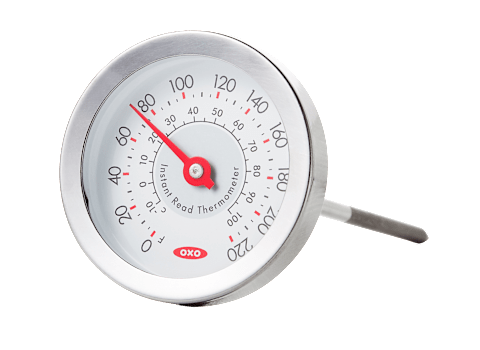Fish and shellfish spoil very quickly and can cause food poisoning. Here’s how to make sure you’re getting the freshest seafood and keeping it safe.
By Lauren Kirchner, Althea Chang-Cook
Seafood is reputed to be a miracle food, and for good reason. They’re high in protein, tend to be low in saturated fat, and are the best way to get plenty of heart-healthy omega-3 fatty acids. And it doesn’t take much to reap its health benefits: Research shows that two or more 3- to 4-ounce servings of fish a week (about the size of a deck of cards) can reduce the risk of heart disease, obesity, and wasting cognitive. We should all eat more seafood!
But seafood is prone to spoilage quickly and, especially when eaten raw, poses special food safety concerns. Our tips will help you reap the healthy benefits of fish and shellfish while reducing the risks.
The risks of raw fish
From sushi and ceviche to oysters and clams on the half shell, raw seafood is a staple in many kitchens. In Consumer Reports’ March 2023 nationally representative survey of 2,001 American adults (PDF), about half of people who eat seafood say they choose it raw at least occasionally.
The cause for concern is that cooking shellfish at 145°F kills most germs that could be on the food, but when food is eaten raw, it may contain dangerous pathogens that can make you sick.
In the case of fin fish, these are mainly parasites such as roundworms, tapeworms and roundworms. Depending on the type, these parasites can burrow into the intestinal wall and cause nausea, diarrhea, or abdominal pain. Some can even migrate to the liver or heart and damage these organs.
In the case of oysters, clams, mussels and other shellfish, bacteria are the most common cause of food poisoning, particularly one called vibrio. It thrives in coastal waters, especially in the warmer months, and can cause diarrhea, vomiting, and fever. Infections with this bacterium sometimes require hospitalization and can even be fatal.
CR’s advice: according to the Centers for Disease Control and Prevention, pregnant women, anyone younger than 5 or older than 65, or who has a weakened immune system should avoid raw shellfish.
Other people can reduce, but not eliminate, the risk of preparing raw fish at home by carefully selecting the shellfish and making sure it is properly prepared.
For most raw fin fish, that usually means buying commercially frozen fish. That’s because parasites that can be found in raw fish can only be killed at temperatures below 0°F, says Dr. Michael Ciaramella, a seafood safety and technology specialist at New York Sea Grant, a partnership with the State University of New York and Cornell University in Ithaca, New York. When you go to prepare the fish, thaw it slowly and, once thawed, keep it very cold. And don’t use the fish if it looks slimy or has a very strong odor.
For raw shellfish, check how fresh it is. Bagged shellfish must have a label indicating when it was collected, and if the shellfish is not bagged the store must have that information. Limit yourself to those that have been collected at most one week before. Also do your own inspection: the shells should close well when struck, and don’t buy them if they are cracked. Eat the shellfish you bring home within a day or two, and when the shells open, the meat should be firm.
When you go to dinner at sushi and seafood restaurants, keep in mind the reputation of the establishment. Ratings and reviews from Google, Yelp, and similar sites aren’t foolproof. But you’d be wise to avoid places that don’t have good reviews, or even have a few mentions of food poisoning. Some locations offer letter grades or color-coded signs to indicate the results of recent food inspections. “Especially when it comes to sushi, I would avoid anything that doesn’t have the highest rating,” says Dr. Sana Mujahid, CR’s head of food safety and testing.
Buy, store and prepare with care
How and where you buy shellfish, as well as how you handle and prepare it, is important to reduce the risk of food poisoning from bacteria and other pathogens. Follow these tips to ensure you’re buying the freshest produce and storing it properly.
- Know the signs of decay. Seafood is more perishable than meat or poultry, so check before you buy. The fish should smell soft and clean, not strong or sour. The fillets should not be discolored or dry around the edges, and the meat should be firm and elastic. In the case of whole fish, it should have clear, bright eyes.
- Don’t rule out frozen fish. Unless you live near a fishing community, chances are the fish you buy didn’t leave the boat that same day. Fish must be transported and the quality may degrade during the journey. Freezing the fish just in time to catch it helps to maintain flavor and moisture. Therefore, frozen fish can be a higher quality product than fresh. Plus, frozen fish can be cheaper, and because it minimizes food waste, it’s better for the environment. When buying frozen shellfish, avoid packages with frost or ice crystals, which may mean the fish has been in storage for a long time or has been thawed and refrozen.
- Take care of cleaning when buying. Keep shellfish separate from other foods in the cart and shopping bags so that bacteria that may be on the fish can’t spread to other foods. Pick the shellfish last and store it in a clean cooler with ice if you can’t get it into the fridge within two hours, or one hour if the outside temperature is above 90°F.
- store it well Once home, store raw shellfish tightly wrapped or in an airtight container in the refrigerator to prevent droplets from contaminating other foods. It’s probably best to store them raw in the main area of the refrigerator. The door is not designed for perishables, and temperatures are more likely to fluctuate in the bins than in the main refrigerator compartment.
- Use it or freeze it. Freeze raw shellfish that you won’t be eating for a day or two. Lean fish will keep for six to eight months in the freezer; fatty, such as salmon, two to three months. However, what looks like fresh fish may sometimes have been previously frozen and thawed in the store, so if there is no sign indicating this, ask at the fish counter. If you bought previously frozen fish, don’t refreeze it: The flavor and texture will be affected.
- Thaw it slowly. To thaw, place the frozen fish in its bag or wrapper on a plate in the refrigerator. Hurry? Put the fish in cold water in a closed plastic bag.
- Prepare it correctly. Make sure your work area is clean before you begin, and use a separate cutting board and utensils for shellfish, then clean them with hot, soapy water. Afterward, use hot, soapy water and paper towels to clean up, especially if there are any spills.
- Check if it’s on point. That means making sure the fish reaches an internal temperature of 145°F. The most accurate method is an instant read food thermometer, preferably digital. For thicker fish, like a salmon fillet, insert the thermometer into one side of the fillet. But since it’s difficult to use a thermometer on shellfish or a delicate fillet of sole, the Department of Agriculture says you can also check doneness by cooking the fish until the flesh is opaque and separates or flakes easily with a fork. . Cook crab, lobster, and shrimp until meat is opaque and pearly; clams, mussels and oysters, until their shells are cracked open; scallops, until milky white or firm and opaque.
- Be prudent with the temperature when serving. Refrigerate cooked shellfish within one to two hours. If the seafood is served cold, such as in a shrimp cocktail or salad, keep it refrigerated until ready to eat. For picnics or buffets, place the serving plate in a bowl or tray lined with ice.
- Throw it away if you’re not sure it’s in good shape. If you don’t know, or can’t trust, how the shellfish was stored before cooking, prepared, or held after cooking, play it safe and throw it away. It’s better than risking food poisoning, says CR’s Mujahid. Throw away cooked shellfish that was left over after two days in the refrigerator.
The Best Food Thermometers According to CR Tests
One of the most important food safety measures you can take is to use a good food thermometer to ensure that seafood, meat, and poultry are cooked to the proper temperature.
CDN ProAccurate TCT572-R
INKBIRD IBT-4XS BT Grill Meat Thermometer
Oxo Good Grips Chef’s Precision Meat Thermometer (11133300)
Editor’s note: This article was also published in the July 2023 issue of Consumer Reports magazine.
Consumer Reports is an independent, nonprofit organization that works side by side with consumers to create a fairer, safer, and healthier world. CR does not endorse products or services, and does not accept advertising. Copyright © 2023, Consumer Reports, Inc.
Consumer Reports has no financial relationship with the advertisers on this site. Consumer Reports is an independent, nonprofit organization that works with consumers to create a fair, safe, and healthy world. CR does not endorse products or services and does not accept advertising. Copyright © 2023, Consumer Reports, Inc.



